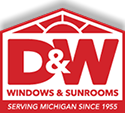Sunshine, barbecues, pool parties – summer brings plenty of fun, but it can also bring extreme heat. As a homeowner, it’s important to stay aware of how skyrocketing temperatures can affect your roof. By recognizing the early signs of heat damage, you can take timely action to prevent costly repairs, ensuring your home remains a comfortable and safe. Let’s explore 4 signs that the summer heat is hurting your roof.
1: Damaged Shingles
Shingles are your roof’s first line of defense. Because of that they can suffer significantly under intense summer heat. Here are the main signs of damaged shingles to look out for:
Blisters: Blisters occur when trapped moisture heats up and expands, creating bubbles on the surface. These blisters can pop, leaving the underlying material exposed to the elements and increasing the risk of leaks.
Cracks: Cracks in your shingles are another red flag. High temperatures can cause these cracks, which can allow water to seep in, causing further damage to your roof’s structure.
Curling: When exposed to prolonged high temperatures, the edges of shingles can start to curl upwards, compromising their protective capabilities.
Discoloration: Discolored shingles can indicate UV damage. Over time, the sun’s rays can bleach the color from your shingles, making them appear faded or lighter in some areas. This is more than just a cosmetic issue – it can weaken the shingles and reduce their lifespan.
2: Rotting Shingles
While the summer heat itself is a concern, any accompanying humidity can also play a detrimental role in your roof’s health. High humidity levels can lead to moisture build-up. Signs of rotting shingles include:
Soft Spots: If you notice soft or spongy spots on your roof, it could mean that your shingles are rotting from the inside out.
Musty Odor: A musty smell coming from your attic or roof area can be a sign of moisture accumulation and rotting shingles.
Visible Decay: If you see visible decay or mold growth on your shingles, it’s a clear sign that humidity has taken its toll.
3: Mold Damage
Mold thrives in warm, damp environments. That makes your roof an ideal breeding ground during the summer months. Mold damage isn’t just unsightly – it can also pose health risks and compromise the structural integrity of your roof. Here are the common ways to identify mold damage:
Dark Spots: Black or dark green spots on your shingles or under the eaves are a common sign of mold infestation.
Algae Growth: While algae isn’t as harmful as mold, its presence can indicate that your roof is retaining too much moisture, creating an environment where mold could thrive.
Health Symptoms: If you or your family members experience increased allergy symptoms or respiratory issues, it might be worth checking for mold growth on your roof.
4: Thermal Shock
Thermal shock occurs when there’s a rapid temperature change, causing the materials in your roof to expand and contract quickly. This constant fluctuation can weaken the roof over time. Keep an eye out for these effects of thermal shock:
Cracked Flashing: The metal flashing around vents, chimneys, and skylights can crack under thermal shock, leading to potential leaks.
Deformed Shingles: The repeated expansion and contraction can cause shingles to warp or become misshapen, reducing their effectiveness.
Structural Weakness: Over time, thermal shock can weaken the overall structure of your roof, making it more susceptible to other types of damage.
Reliable Solutions to Protect Your Roof
The summer heat can be brutal on your roof but, by keeping an eye out for these signs, you can address any problems early – and save yourself from far more extensive (and expensive) repairs down the line.
When it comes to something as important as your roof, you want to be sure you’re working with experts who get the job done right. At D&W Windows and Sunrooms, we take pride in our quality workmanship and exceptional customer service. Whether you need a repair, or a full replacement, we’re here to provide reliable solutions.
Get a free estimate from D&W Windows and Sunrooms today!
Disclaimer: Our blog offers general information only; it isn’t an endorsement of specific actions. Please consult professionals and consider your situation before making decisions. D&W Windows is not responsible for any outcomes resulting from the advice provided.
